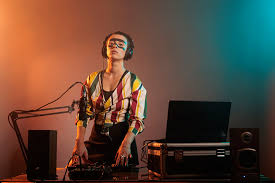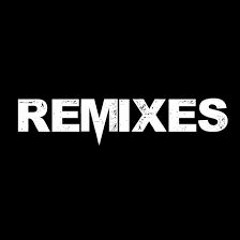
When you think about cinematic moments the sweeping romance of La La Land, the high-octane drama of Inception, or the emotional punch of Schindler’s List there’s one thing they all share in common: the undeniable power of classical music. While many associate orchestral scores with grand, period dramas, classical music is more than just the soundtrack to the past. It plays a pivotal role in shaping emotions, heightening tension, and deepening the narrative in film and TV.
Classical music has a remarkable ability to communicate things words cannot. It’s the unsung hero of visual storytelling — quietly influencing how we experience a scene, creating a bridge between the visuals and the viewer’s emotions. But how exactly does classical music work its magic in modern film and television?
Building Atmosphere and Emotion
The most important role of classical music in film is its ability to amplify emotion. Think about the opening of The Godfather with Nino Rota’s haunting score, or the heartbreaking piano theme from The Pianist by Wojciech Kilar. Both pieces of music are more than just soundtracks — they become emotional cues, creating a deep connection to the on-screen events. The slow, minor key of Rota’s score carries the weight of the Corleone family’s power and tragedy, while the sparse piano notes in The Pianist reflect the isolation and heartbreak of the film’s protagonist.
Classical music speaks to our deepest feelings, from joy to sorrow, tension to release. The richness of orchestral arrangements can elevate even the smallest scene. Imagine the serene beauty of the countryside in The Sound of Music, where the orchestra gently swells, making the stunning visuals even more breathtaking.
Classical Music and Narrative Structure
Film composers often turn to classical themes to guide the audience through the narrative structure of the film. The use of classical motifs or full orchestral scores helps outline the emotional arc of the movie, signaling to the audience when to feel hope, suspense, or fear.
A perfect example of this can be found in The Lord of the Rings trilogy, where composer Howard Shore uses leitmotifs — recurring musical themes associated with specific characters, locations, or ideas. The theme of the Ring, for instance, subtly shifts throughout the trilogy, mirroring the growing weight and darkness of the narrative.
Classical music also works as a tool to highlight contrast within a narrative. In a story where joy is often replaced by sorrow, a sudden burst of Beethoven’s Symphony No. 7 can catch viewers off guard, emphasizing the stakes of a pivotal moment. Think of A Clockwork Orange, where the juxtaposition of Ludwig van Beethoven with horrific scenes creates a chilling effect.
Iconic Classical Composers in Film
The use of classical music in film wouldn’t be the same without the talents of legendary composers who blend orchestral arrangements with storytelling mastery. Names like John Williams, Hans Zimmer, Ennio Morricone, and Max Steiner have shaped the sound of cinema for decades.
- John Williams’s score for Star Wars is perhaps one of the most famous examples of how classical influences can shape the film’s entire world. From the iconic Imperial March to the sweeping themes of Harry Potter, Williams uses rich orchestral sounds to make every moment feel larger-than-life.
- Hans Zimmer, known for his groundbreaking work in films like Inception and The Dark Knight, combines orchestral elements with electronic music, creating compositions that are both contemporary and timeless. Zimmer’s music creates tension and urgency, making every moment feel heightened.
- Ennio Morricone, the legendary composer behind The Good, the Bad and the Ugly and The Mission, brought classical influences into the world of Westerns and epic dramas, blending them with indigenous and folk sounds, creating some of the most recognizable and emotionally potent music in film.
Classical Music in TV: A Dramatic Presence
Classical music isn’t just reserved for the big screen. On the small screen, its use has similarly evolved. TV shows like Westworld, Chernobyl, and The Crown all rely heavily on classical music to set the tone and immerse the audience in the world of the show.
- In Westworld, composer Ramin Djawadi uses classical compositions to explore themes of humanity, artificial intelligence, and control. The show’s signature twist? Famous pop songs reimagined with orchestral arrangements, such as Black Hole Sun and Paint It Black — making classical music feel fresh, edgy, and relevant.
- In Chernobyl, classical music is used to heighten the drama and underscore the devastation of the nuclear disaster. The haunting, minimalist music complements the stark imagery and emotional gravity of the show.
- The Crown uses pieces from composers like Benjamin Britten and Johann Sebastian Bach to reflect the grandeur and complexity of the British monarchy, while providing emotional depth to the drama unfolding onscreen.
In TV, classical music is often used to anchor the narrative — allowing characters to experience real, often raw emotions, without saying a word.
The Enduring Power of Classical in Storytelling
So why is classical music still so central to modern film and TV? It comes down to its ability to transcend time and communicate universally. The emotional richness and dramatic potential that classical music offers will always be relevant to filmmakers and audiences alike.
Classical music can be quiet and introspective or bold and dramatic, but its ability to convey emotion without a single word makes it the perfect tool for storytelling. It helps us feel what’s happening on screen — to connect, empathize, and be moved by the story.
In 2025, whether we’re watching a big-budget sci-fi film, an indie drama, or a gripping historical documentary, classical music continues to play a vital role in the craft of filmmaking. It’s timeless, adaptable, and always able to reach the heart of the viewer.






